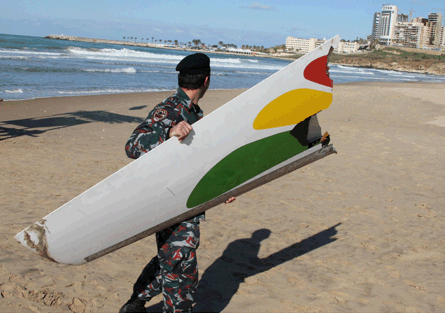If the circumstances surrounding the loss of Ethiopian Airlines 409 at Beirut evoke a miserable sense of déjà vu, it is hardly surprising. Another dark and thundery night, another departure over featureless terrain, another fatal spiral. The similarities with the Kenya Airways 507 inquiry - which was wrapping up as Lebanese soldiers were hauling parts of the Ethiopian 737 out of the sea - make it hard to avoid wondering how far the parallels will go.
Because if the already-remote possibility of an undetected technical problem on the Ethiopian jet is conclusively brushed aside by the inquiry, it will mean a fully functional 737 spent 4min blundering aimlessly through Mediterranean airspace on a flightpath punctuated by automated warning after automated warning. In which case, someone needs to ask: where was the airmanship?
While details of the captain's and co-pilot's respective ages and logged time have led some to question their level of experience, this deflects from a basic point. If the aircraft was airworthy, then either pilot was more than capable of flying it.
 |
|---|
© Rex FeaturesDéjà vu? The Ethiopian crash has echoes of Kenya's |
Experience might aid your chances when the unforeseen and unexpected strike. Basic airmanship should see you through a routine departure. Without it, routine can quickly become non-routine.
Three years after the Kenyan 737 disintegrated in a Cameroonian mangrove swamp, the investigation team highlighted the lack of airmanship in the cockpit. It also pointed out the tinderbox crew pairing of a dominant captain - with an "overbearing tendency" and a "touch of arrogance" - and an unassertive and reserved co-pilot less than half his age.
There is nothing to suggest the same was true on the Ethiopian jet, and Ethiopian Airlines has been fighting a vehement public battle to preserve the image of its crew - virtually to the point of insisting that some other as-yet unexplained factor must have been responsible for the aircraft's behaviour.
Given that Kenya Airways and Ethiopian Airlines are regarded as among the best carriers sub-Saharan Africa has to offer, on a continent that struggles with air safety, that would almost be a relief.
But it's hard to ignore the near-identical nature of the two accidents, and - with all due deference to the final investigation report - hard not to suspect that the root cause of Ethiopian 409's loss will not be anything complicated, but rather something depressingly basic.
Source: Flight International



















